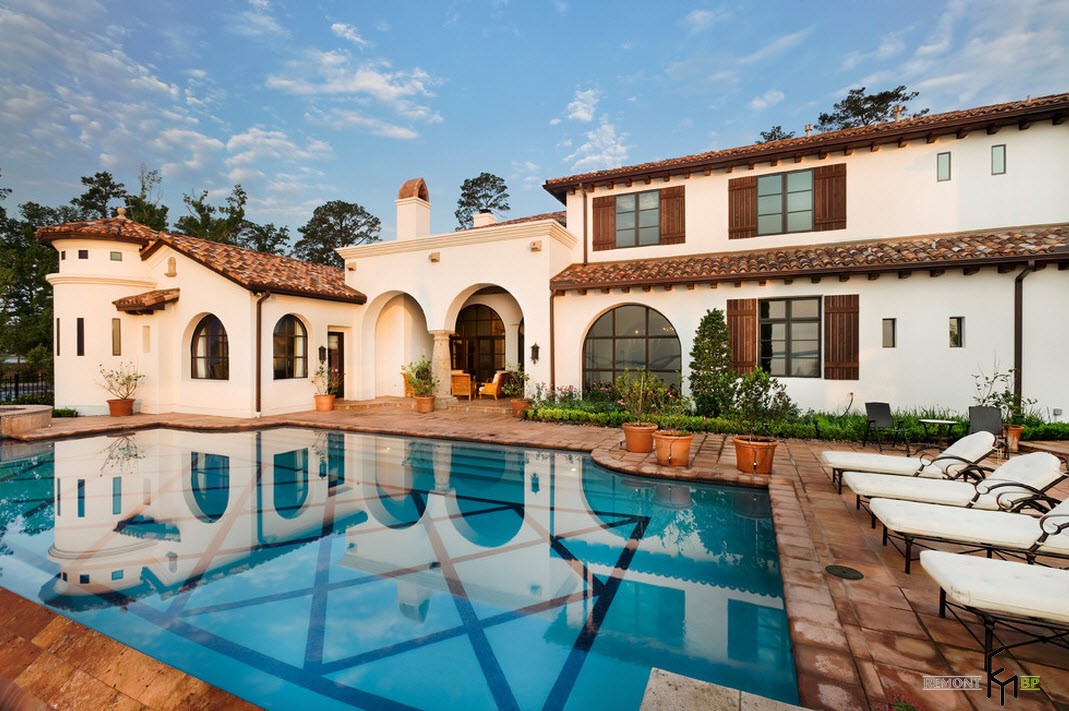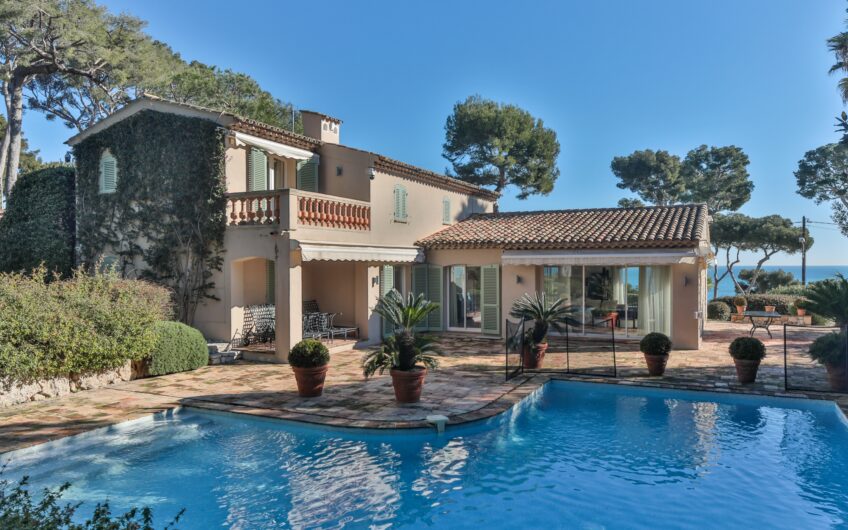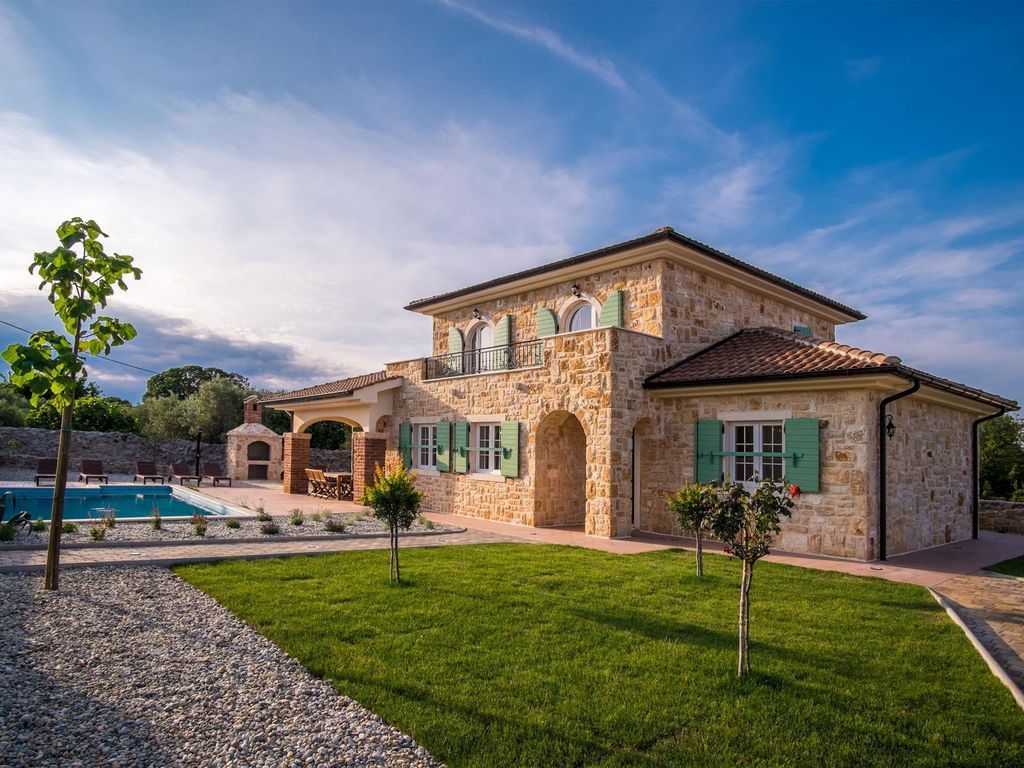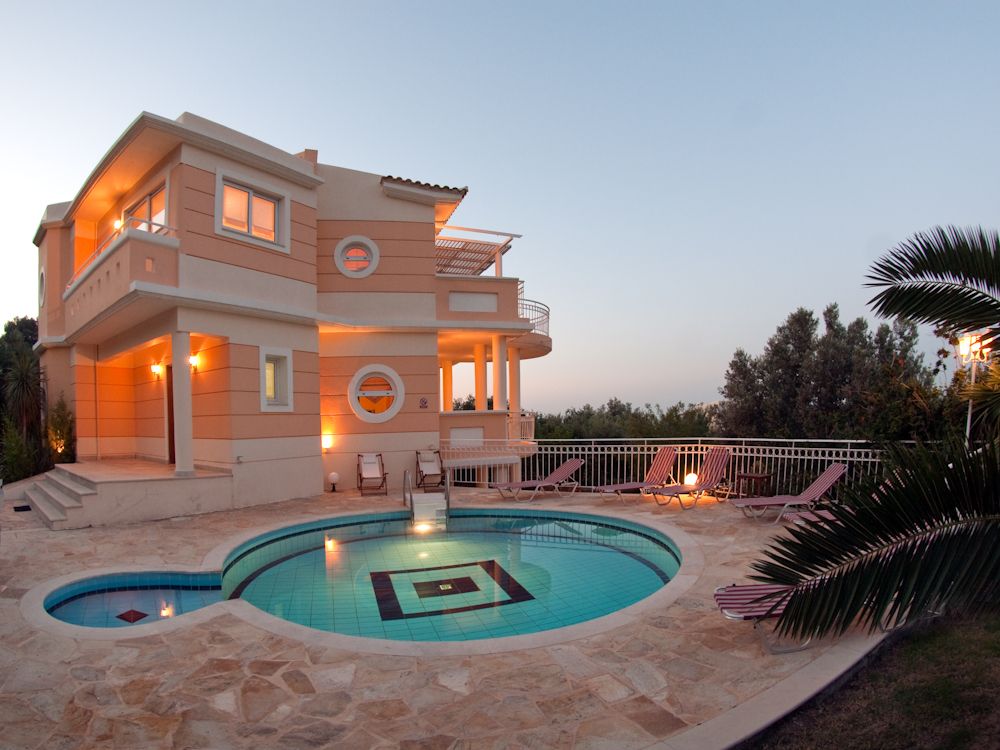Villa añasco: Estadía de 3 días y 2 noches para hasta 6 personas en Villa del Centro Vacacional de Añasco
Estadía de 3 días y 2 noches para hasta 6 personas en Villa del Centro Vacacional de Añasco
Detalles
¡Reserva tus vacaciones familiares! Con esta exclusiva Oferta Del Día podrás reservar tus vacaciones familiares en el Centro Vacacional de Añasco. Un pedazo de tierra cerca de exuberantes paisajes, relajación y aventura, espera por ustedes. ¿Qué esperas? Solo tienes que decidir la fecha que quieres visitarlos en semana o weekend. En esta ocasión, una vez realices tu compra, podrás hacer la reservación directamente en Oferta Del Día.
Opción #1: Paga $138 en lugar de $230 por estadía de 3 días y 2 noches en villa para hasta 6 personas en el Centro Vacacional de Añasco del Departamento de Recreación y Deportes.
Opción #2: Paga $138 en lugar de $230 por estadía de 3 días y 2 noches en villa para impedidos de hasta 6 personas en el Centro Vacacional de Añasco del Departamento de Recreación y Deportes.
¿Cómo reservar?
Una vez oprimas el botón de “COMPRAR”, verás una plataforma de reservaciones donde podrás escoger la fecha de llegada a la villa, según selección. Las fechas disponibles aparecen color naranja. Luego de completar el pago, verás la confirmación de tu reservación en tu cupón de compra. En el cupón, aparecerá la fecha en la que elegiste hacer check-in.
Las fechas disponibles aparecen color naranja. Luego de completar el pago, verás la confirmación de tu reservación en tu cupón de compra. En el cupón, aparecerá la fecha en la que elegiste hacer check-in.
Aplican todos los términos y condiciones de los Centros Vacacionales del Departamento de Recreación y Deportes. Las fechas reservadas no se pueden cambiar y NO TIENEN REEMBOLSO/DEVOLUCIÓN DE DINERO Bajo ningún concepto. Favor de escoger cuidadosamente antes de hacer su compra. No se aceptarán reservaciones por teléfono. Corrobore el calendario de reservaciones para verificar la disponibilidad. Las villas tienen capacidad máxima para seis personas. Constan de dos habitaciones: una matrimonial y otra con dos literas. Importante: no incluyen almohadas, fundas ni sábanas; todo cliente será responsable de llevar estos materiales. La cocina tiene tope de estufa y nevera solamente (no incluye utensilios), poseen balcón tipo terraza y algunas unidades cuentan con facilidades para personas con necesidades especiales. Check in es a las 3:00 p.m. y check out es a las 12:00 p.m. Para más información, llame al (787)721-2800; extensiones 4569, 4575, 4571, 4572, 4573, 4574. Oferta válida para estadías del 3 de noviembe hasta el 30 de diciembre de 2016. No todas las fechas dentro del periodo de reservación están disponibles. Sujeto a disponibilidad. Válido mientras duren.
Check in es a las 3:00 p.m. y check out es a las 12:00 p.m. Para más información, llame al (787)721-2800; extensiones 4569, 4575, 4571, 4572, 4573, 4574. Oferta válida para estadías del 3 de noviembe hasta el 30 de diciembre de 2016. No todas las fechas dentro del periodo de reservación están disponibles. Sujeto a disponibilidad. Válido mientras duren.
Más sobre los Centros Vacacionales:
Los Centros Vacacionales de Boquerón, Añasco, Humacao y Utuado anteriormente administrados por la Compañía de Parques Nacionales, en estos momentos administrados por el Departamento de Recreación y Deportes, se han consolidado como los mejores de nuestra Isla. Ubicados en los paisajes naturales más exuberantes alrededor de la Isla, disponen de modernas instalaciones que brindan seguridad, descanso, diversión y un reencuentro con la Madre Naturaleza.
La compañia
Dpto. de Recreación y Deportes
Centro Vacacional AñascoBarrio Hatillo, Carretera #115 Km.
 5
5Añasco, PR 00610
website
Letra pequeña
- Se requerirá un depósito de seguridad (fianza) de $100 al momento de hacer check in, el mismo será devuelto al hacer check out. Pago debe ser en Giro o Tarjeta de Crédito. (No cheques. No efectivo)
- Todo el valor debe utilizarse en una estadía.
- Se pueden comprar varios cupones para regalar.
- Válido para hasta 6 personas en semana o weekend.
- No se puede combinar con otras ofertas.
- Requiere reservación al momento de comprar.
- Fechas sujeto a disponibilidad.
- Para completar el proceso de reservación, deberá presentar su cupón impreso en la Oficina Central del Centro Vacacional.
- De tener algún problema con tu compra o cupón des comunicarte a: [email protected]
- Estacionamiento conlleva costo adicional
En caso de necesitar ayuda, puedes contactarnos a través de correo electrónico escribiendo a
apoyo@ofertadeldia..jpg) com, con tu nombre, información de contacto
com, con tu nombre, información de contacto
(correo electrónico alterno, número de teléfono), y descripción de la situación que tengas.
Recuerda que aplican todos los Términos y Condiciones y la Política de Privacidad de Oferta del Día.
°HOUSE ON THE BEACH – 16 PEOPLE – WESTERN PUERTO RICO ANASCO (Puerto Rico)
Address
401 Km. 2.1,
Anasco,
Puerto Rico,
00610,
Puerto Rico
View map
Overview
House On The Beach – 16 People – Western Puerto Rico offers an accommodation with sea views.
Location
Parque Nacional Tres Hermanos is just 0.9 miles from the venue. It is just a 10-minute drive to Puente de Anasco. The villa is a 25-minute drive to Isabela. House On The Beach – 16 People – Western Puerto Rico is located in the vicinity of Tres Hermanos.
Eugenio Maria de Hostos airport is approximately 7 miles from the property.
Rooms
Certain rooms feature multi-channel television, a balcony and a dining area. The bathroom at this venue has a roll in shower, bathtubs and a walk-in shower plus a dryer, bath sheets and towels.
The bathroom at this venue has a roll in shower, bathtubs and a walk-in shower plus a dryer, bath sheets and towels.
Eat & Drink
A microwave, coffee and tea making facilities, and a refrigerator are also featured.
Internet
Wireless internet is available in public areas for free.
Guest Parking
Private parking is possible on site for free.
Number of rooms: 8.
– Less
Facilities
Most popular facilities
Free Wi-Fi
Free Wi-Fi in public areas
Parking
Kitchen facilities
Dryer
Cookware/ Kitchen utensils
Air conditioning
TV
Flat-screen TV
Food/ Drinks
Outdoor dining area
General
- Free Wi-Fi
- Kitchen facilities
- TV
- Food/ Drinks
Dining
- Outdoor dining area
Room view
- Sea view
Room features
- Sitting area
- Patio
- Tea and coffee facilities
- Dining table
Bathroom
- Washing machine
Self-catering
- Dryer
- Cookware/ Kitchen utensils
Media
- Flat-screen TV
Show all facilitiesHide facilities
Good to know
Check-infrom 15:00-23:59FREECheck-outuntil 10 amFREE
Children & extra bedsThere are no cribs provided in a room.
PetsPets are not allowed.
+ More- Less
Unfortunately, there are no rooms available at this hotel at the moment. Please see hotels located nearby.
Rooms and availability
Eight-Bedroom House
Bed options:
2 Single beds
Room size:
3000 m²
-
Sea view
-
Shower
-
Bathtub
-
Balcony
org/LocationFeatureSpecification”>
Air conditioning
room details
Location
401 Km. 2.1,
Anasco,
Puerto Rico,
00610,
Puerto Rico
- City landmarks
- Nearby
- Restaurants
Route 115
Mirador de Anasco
2.9
km
Zoo
Dr. Juan A. Rivero Zoo
9.8
km
Tres Hermanos
200 m
Balneario de Anasco
250 m
Restaurant
Rancho Grande
630 m
Getting around
+ More- Less
Need a shuttle?
You can book a shuttle, once your reservation is complete.
Reviews
Stayed there?
Share your experience with us.Write a Review
Address
401 Km. 2.1,
Anasco,
Puerto Rico,
00610,
Puerto Rico
View map
Good to know
Check-infrom 15:00-23:59FREECheck-outuntil 10 amFREE
Children & extra bedsThere are no cribs provided in a room.
PetsPets are not allowed.
+ More- Less
Getting around
+ More- Less
Need a shuttle?
You can book a shuttle, once your reservation is complete.
MAGNASCO • Big Russian Encyclopedia
MAGNASCO (Magnasco) Alessandro (nickname Lissandrino) (4.2.1667, Genoa – 12.3.1749, ibid.), Italian. painter. Son of the Genoese painter Stefano Magnasco; at the age of ten he moved to Milan, where ca. 1681 – 1682 entered the studio of F. Abbiati, under whose guidance he completed a series of portraits (“Portrait of a Man”, 1680s, Pinacoteca Brera, Milan) and a number of religions. paintings (“St. Francis Comforted by Angels”, 1680s, Palazzo Bianco Gallery, Genoa). The drawings and engravings of J. Callo, the paintings of P. Veronese, Titian, S. Rosa, and other masters of the 16th and 17th centuries, which he saw in private collections, primarily in the collection of the Florentine Duke Ferdinando Medici, had a great influence on the formation of M. . Started working on my own. 1690. Lived and worked in Milan (c. 1677-1703 and 1709-35), Florence (1703-09) and Genoa (1735-49).
1690. Lived and worked in Milan (c. 1677-1703 and 1709-35), Florence (1703-09) and Genoa (1735-49).
A. Magnasco (with the participation of C. Spera). “Bacchanalia”. 1710s (?). Hermitage (St. Petersburg).
M.’s work is distinguished by a variety of subjects: he wrote mythological, New and Old Testament stories, episodes from the life of monks and hermits, interiors of synagogues, Quaker meetings, scenes of witchcraft and the witches’ sabbath, lit. and theatrical characters (Don Quixote, Pulcinella), as well as the “low” images of shepherds, fishermen, laundresses, gypsies, soldiers, bandits, etc., popular at that time. As a master of small genre compositions and staffing scenes (pittore delle figure), he collaborated with landscape painters A. F. Peruzzini and A. Tavella, the artist of architectural backgrounds K. Spera, and others. In these joint works, the figures painted by M. spiritualize the standard schemes of landscapes and ruins: they build plans in them, creating a spatial landscape”, 1697, private collection, Milan), play the role of a compositional bundle (“The Martyrdom of St. Erasmus”, 1690s, private collection, Milan), wrap around architectural structures like ivy (“Bacchanalia”, Pushkin Museum; “Bandits’ Halt”, “ Bacchanalia, the Hermitage, St. Petersburg; all 1710s?), and in the interior scenes they create a luminous vibrating accent (Synagogue and Quaker Meeting, both c. 1704, Uffizi Gallery, Florence). The artist paints with open strokes of green, blue, yellow and other colors, for which his improvisational style was called pittura di tocco (painting of a stroke). M. combines figurines with interior or landscape elements in such a way that, losing genre recognition, they become a color element of space, creating a complex spatial color spot. This principle of abstract pictorial perception of the motif is clearly visible in M.’s small-format paintings (“The Love of Pulcinella”, 1700s, Museum of Art, Copenhagen; “Don Quixote”, 1719-25, Art Institute, Detroit) and in his drawings. In graphic works, relying simultaneously on the traditions of J. Callo (the transformation of a genre motif into an improvisational composition of verticals, horizontals, and diagonals on the sheet plane) and Venetian drawing (tinted paper, the “three pencils” technique), M.
Erasmus”, 1690s, private collection, Milan), wrap around architectural structures like ivy (“Bacchanalia”, Pushkin Museum; “Bandits’ Halt”, “ Bacchanalia, the Hermitage, St. Petersburg; all 1710s?), and in the interior scenes they create a luminous vibrating accent (Synagogue and Quaker Meeting, both c. 1704, Uffizi Gallery, Florence). The artist paints with open strokes of green, blue, yellow and other colors, for which his improvisational style was called pittura di tocco (painting of a stroke). M. combines figurines with interior or landscape elements in such a way that, losing genre recognition, they become a color element of space, creating a complex spatial color spot. This principle of abstract pictorial perception of the motif is clearly visible in M.’s small-format paintings (“The Love of Pulcinella”, 1700s, Museum of Art, Copenhagen; “Don Quixote”, 1719-25, Art Institute, Detroit) and in his drawings. In graphic works, relying simultaneously on the traditions of J. Callo (the transformation of a genre motif into an improvisational composition of verticals, horizontals, and diagonals on the sheet plane) and Venetian drawing (tinted paper, the “three pencils” technique), M. explores the possibilities of graphic and color means of transformation space (“Man with a Log”, Palazzo Rosso Gallery, Genoa; “Capuchins on the Road”, private collection, Milan).
explores the possibilities of graphic and color means of transformation space (“Man with a Log”, Palazzo Rosso Gallery, Genoa; “Capuchins on the Road”, private collection, Milan).
In the period between 1720 and 1725 M. overcomes the narrow limits of the figurine genre and becomes a landscape painter. Self-made interiors appear in his work, painted as a landscape (“Synagogue”, 1725–35, Museum of Fine Arts, Cleveland; “Refectory of the Osservante Brothers”, 1736–37, City Museum, Bassano del Grappa), ruins (“ Bacchanalia, 1720-30s, Ringling Museum of Art, Sarasota) and paintings dominated by the landscape itself (paired works The Baptism of Christ and Christ Saving St. Peter, 1730s, Nat. Art Gallery, Washington; “Praying monks and fishermen pulling a net by the sea”, 1730s, Museum of Art, Copenhagen). In these works, the primary tasks are the spontaneous realization of color-spatial vision and the transfer of a chaotic, changeable, but at the same time rhythmically organized elements of the landscape. The painting by M. “Reception at Villa Albaro” (1735, Palazzo Bianco Gallery) gives the impression of being painted in the open air, although it was created in the studio: complex transitions of warm brown and cold blue tones with the inclusion of a red hue of the ground create a changeable overall tone of the picture.
The painting by M. “Reception at Villa Albaro” (1735, Palazzo Bianco Gallery) gives the impression of being painted in the open air, although it was created in the studio: complex transitions of warm brown and cold blue tones with the inclusion of a red hue of the ground create a changeable overall tone of the picture.
The work of M., who developed the problem of a consistent fusion of figures and landscape into a single pictorial space, became a link in the development of Italian. landscape genre of the 17th and 18th centuries. and an important milestone on the way to the formation of the plein air landscape as a special pictorial task in the 19th century. The Venetian painter F. Guardi became a direct follower of M.
Magnificent ruins
Capriccio (Italian capriccio, literally “caprice”) is a genre of landscape painting popular in the 17th-18th centuries. The paintings of this genre depicted architectural fantasies, mostly the ruins of fictitious ancient buildings.
Robert Hubert French painter (1733-1808). Known for pictorial fantasies, whose main motifs are parks and real majestic ruins, for which he made many sketches during his stay in Italy. Robert’s paintings were highly valued by his contemporaries. His paintings are presented in the Louvre, the Carnival Museum, the St. Petersburg Hermitage and other palaces and estates in Russia, in many major museums in Europe, the USA, Canada, and Australia. What the painter depicted on his canvases raises many questions, but historians did not bother, summarizing that this is only the “imagination” of the author and considered the topic closed.
“Capriccio with the Pyramids”
“Architectural landscape with a canal”
The artist traveled extensively in Europe and left us some very interesting pictures from which we can form some insight into the past.
“The ruins of the Doric Temple”
“The ruins of the terrace in Marley Park”
This Palace-Park Complex of San Sushi in Potsdam, erected in 1745-1747 at the project of King Friedrich the Great. The building, it turns out, is completely new at that time, but for some reason the artist is drawn to draw its imaginary ruins.
The building, it turns out, is completely new at that time, but for some reason the artist is drawn to draw its imaginary ruins.
“Antique ruins serving public bathing”
“Villa Madama under Rome”
from Wikipedia: “Later, the name of the suburban villa Dzhulio de Medici, unfinished in the 16th century, the future pope VII . Built on the slope of Monte Mario on the western bank of the Tiber River north of the Vatican.” But in my opinion, these are the ruins of a structure that is much older.
Laundress among the ruins
His paintings clearly show that the people depicted in them live among the ruins of former civilizations and absolutely cannot at least bring them into a decent appearance, not to mention some kind of restoration.
“Forgotten statue”
“Stable in the ruins of Villa Giulia”
“The Hermit prays among the ruins of the ancient temple”
“Staircase with columns”
“Old bridge”
“Porting of a suburban person” 9,00022
“Tomb of Caecilia Metella in Rome”
“Interior of the Temple of Diana in Nîmes”
3 “Pont du Gard” “Pont du Gard” 0003
“View of the port of Ripetta”
“Coliseum”
“Obelisk Pesage”
“Landscape with the arch and dome of the Council of the Council of the Hote in Rome”
“Ruins”
“Italian Park”
Guard Francesco Lazzaro (1712-1793)-Italian painter, representative of the Venice school of painting. He is also a great dreamer, otherwise how can one explain such absolutely fantastic views of Venice?
He is also a great dreamer, otherwise how can one explain such absolutely fantastic views of Venice?
“Capricio with the pyramid”
“Arcada in front of the city with the towers”
“Caprichio”
“Kapricchio” 9000 9000 9000 9000 9000 Capriccio with bridge, ruins and lagoon”
“Venice”
Giovanni Paolo Panini (1691-1765) is one of the founders of the architectural ruin landscape. The artist inhabited his architectural views and interiors with small human figures, playing on the favorite theme of the 18th century – a comparison of the grandeur of the ancient past and the triviality of the present. As an artist, Panini is best known for his paintings of the sights of Rome, in which he paid great attention to its antiquity.
Rome lay in ruins, living among the grand remnants of its history. The ruins were the Colosseum, temples, baths, which were part of everyday life, they were inhabited. Attaching to the stone walls of the hut, clogging the palace windows with boards, attaching wooden ladders to marble, covering the ancient vaults with thatch. And among those ruins, artists and architects swarm with their albums and tape measures, again and again trying to extract from them the secrets of eternal beauty …
Attaching to the stone walls of the hut, clogging the palace windows with boards, attaching wooden ladders to marble, covering the ancient vaults with thatch. And among those ruins, artists and architects swarm with their albums and tape measures, again and again trying to extract from them the secrets of eternal beauty …
“Architectural Kapricchio”
“Pantheon”
“Interior Santa Maria Majore in Rome”
“Capricious ruins”
3 “Interior view of the Cathedral of St. Peter in Rome”
Giovanni Antonio Canaletto (1697 – 1768) Italian artist, head of the Venetian school of Vedutists, master of urban landscapes in the style of academicism also painted canvases in the style of architectural romanticism. Giovanni Paolo Panini had a great influence on his work.
“Architectural Kapricchio”
“Arka Konstantin in Rome”
“Pyatztsa Navona”
9000 9000
“Kapricho and the Gupers of the Russian in Padua”
Alessandro Magnasco (1667-1749).